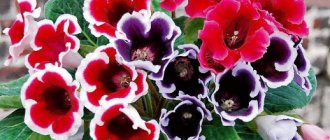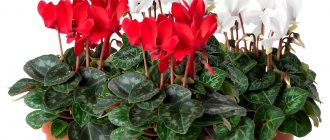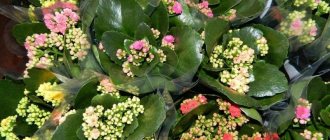From time immemorial, indoor trees and flowering plants have created a cozy atmosphere at home, bringing happiness and love, peace and tranquility to their owners.
But home gardening is becoming especially relevant right now, in the intense pace of life in large cities. After the abundance of concrete, glass and metal, people have an urgent need to create a small green oasis at home to communicate with wildlife.
Indoor trees of various types (coffee, lemon, dollar, money), as well as small flowering potted crops for growing on window sills and shelves (Saintpaulia, spathiphyllum, low-growing varieties of Chinese rose) are ideal for this.
Beautiful indoor plants will make the terrace more cozy
Indoor trees and flowers can not only feel, but also create a mood for their owners. Living plants in the house relieve stress and fatigue, give love and happiness, ennoble the interior, help purify the air from pathogens and create a special indoor microclimate. Not a single, even the most expensive composition of artificial and cut flowers can replace fresh flowers growing in pots in the house.
All plants in the house are classified according to three large groups:
- Decorative deciduous. These include indoor trees and various plants whose aesthetic value lies in their beautiful leaves. The leaves can be light and dark green, variegated marbled in color, and also have such bright colors that they are quite capable of replacing flowers. Plants with original leaf shapes are widely used in the interior - linear, lobed, with a dissected or jagged edge.
- Decorative flowering. These include both perennial plants that bloom all year round, as well as annual and tuberous potted plants with a seasonal flowering period. Perennial flowering crops, unlike annual ones, remain decorative for a long period and do not die after flowering. Tuberous flowering plants have the peculiarity of falling asleep in winter after the flowers and leaves fall off. Annual plants are widely used in the interior to create short-lived but beautiful compositions of fresh flowers.
- Cacti and succulents. These include representatives of various families, similar in biological and external characteristics. The plants are stable and unpretentious when kept indoors, compact and have an incredible variety of shapes. Due to its unique properties, as well as exclusively decorative flowering, this group of plants has become widespread in indoor culture.
Many ornamental plants are also fruit plants, delighting their owners with tasty and healthy fruits (lemon and tangerine trees).
What crops are most common in indoor floriculture and why are they remarkable? A mini-rating of the most famous houseplants includes:
Beautiful indoor plants in the interior of an apartment
A tall fern will perfectly decorate the interior
Blooming bonsai
Decorate your home with different plants
A coffee tree
An indoor coffee tree will be a wonderful interior decoration thanks to its large evergreen leaves and decorative snow-white flowers with a sweet aroma.
The exotic coffee tree refers to fruit trees, the berries of which, after ripening, picking and roasting, acquire the familiar appearance of coffee beans.
There are only two types of coffee trees suitable for growing at home - Liberian and Arabian. An adult coffee plant can produce up to 0.5 kg of fruit per year.
Coffee trees in glass pots
Large coffee tree with fruits
Tall coffee tree
Lemon Tree
The lemon tree is a very decorative fruit plant. Natural types of lemon are unsuitable for home cultivation in pots, since under natural conditions they reach quite large sizes.
Therefore, breeders have developed dwarf varieties of lemon trees - these are Pavlovsky lemon, Maykop lemon, Genoa, etc. The evergreen lemon tree does not require special care, and with proper maintenance it is capable of bearing fruit all year round.
You can grow a lemon tree at home simply from seeds. And creating a home lemon garden from several lemon trees will not only refresh the interior, but also completely provide the average family with delicious lemons.
Fruiting lemon tree
Transplanting indoor trees
If you understand how to care for it correctly, then any decorative greenery will delight you for many years. All trees, like indoor shrubs, need proper and timely replanting. The roots grow better depending on the pot; the more spacious the space, the more comfortable it is for the plant to develop. If you want the dimensions not to increase, then take only a slightly larger pot. The transplant is done as follows:
- the first 1-3 years - no more than 2 times a year;
- the rest of the time - every 3-5 years, depending on the situation.
But the soil changes every year. You need to make the replacement like this:
- part of the earth from above is removed;
- in its place a new soil, useful with nutrients, is filled up.
To prevent the crown from growing, it will be enough to simply change the soil, not the pot. For detailed transplant instructions, see the video below.
Interesting! You can decorate a flower pot with your own hands, turning a nondescript clay vessel into a work of art. We have described the best ideas for decorating flower pots here.
If you place green decor in your home, you will not only add beauty and comfort to your home, but also improve air quality due to the absorption of carbon dioxide and the release of “fresh” oxygen. Such plants perform the function of decoration and health improvement “excellently”.
tangerine tree
The tangerine tree, like the lemon tree, is an evergreen citrus fruit tree.
And, although in natural conditions tangerine trees do not grow so large and overall, for growing at home it is better to choose dwarf crops - Clementine, Unshiu, tangerine trees of the Vasya group, etc.
Mandarin is unpretentious and easy to keep at home. Similar to a lemon tree, a tangerine can be easily grown from an ordinary seed. Dark green shiny leaves, small beautiful flowers with a delicate aroma and bright orange fruits look very beautiful in the interior.
Fruit bearing tangerine tree
Small tangerine tree on the windowsill
Small tangerine trees in pots
Reproduction
Ficuses reproduce in various ways: by leaves, shoots, cuttings and even twigs. You can find detailed information about propagating ficus at home in a separate article.
Handle
Most varieties of ficus are propagated using cuttings, so how can you grow a ficus from a cutting at home?
Answer: in spring or autumn, apical cuttings 10-15 cm long should be cut obliquely.
The lower leaves must be removed, and the upper ones must be shortened by half.
Immediately after separating the cutting, rinse the cut with water at room temperature.
Then it is recommended to dry the cut part to remove the juice, which, when in contact with air, inhibits the formation of the root system.
The container with the future ficus must be placed in a warm, bright place.
The plant takes root in about 3-4 weeks. Initially, light-colored growths appear on it, from which roots subsequently develop.
After this, the plant can be planted in the ground.
Useful video on how to grow ficus from cuttings:
Twigs
How can you grow a ficus from a twig?
Answer: to do this, you need to trim a long branch for seedlings.
The cut shoot must be placed in a container with settled water for further rooting.
As water evaporates, add water to the container. After the branch takes root, it can be planted in the ground.
The soil mixture in which the branch is planted must be regularly loosened and moistened.
Useful video on how to grow ficus from a twig:
Leaflets
How to grow fix from a leaf at home?
Answer: to do this, a leaf with a piece of stem (cutting) must be cut off from an adult plant. The cut should be oblique and located in the middle of the node, which is located below the leaf selected for planting.
Contact of this substance with the skin or mucous membranes can cause ulcers and burns.
It is best to use leaves for growing a new ficus from the trunk or side stems.
After cutting the leaf, its cuttings are washed with running water and dried.
Then the leaf must be rolled into a tube shape and secured with an elastic band or thread.
The planting material rolled up in this way is secured to a strong, long peg and placed in a pre-prepared soil mixture.
The cutting must be completely immersed in the soil. The leaf germinates best in a warm room with sufficiently humidified air.
Water the seedlings with soft water at room temperature.
Useful video on how to grow ficus from a leaf:
By shoots
How to grow a ficus from a shoot?
To do this, you need to cut a small piece of the stem with one or more leaves.
Place the shoot in a dark container filled with water so that the leaves do not come into contact with the liquid.
It is advisable to add a small amount of charcoal there.
For 30 days, the pot with the shoot is placed in a warm place, protected from direct sunlight.
As water evaporates, you need to add water to the container. After the roots appear, the plant is transplanted into a pot with pre-prepared soil.
The shoot is covered with plastic, glass or cellophane film to maintain constant temperature and humidity.
After rooting, the new plant is planted in a pot with loose soil.
We wrote about how to plant a ficus with shoots, leaves and seeds, as well as how to quickly root out a plant here.
banana tree
The banana plant can be grown at home both as a fruit plant and as an ornamental plant.
Even in indoor conditions, this large herbaceous plant, very similar to a tree, reaches a height of 2 meters.
Popular varieties are the decorative velvety banana with inedible fruits and the Kiev dwarf fruit banana with large and sweet fruits.
Indoor banana tree
Tall indoor banana tree
Banana tree in a pot
How does ficus grow?
How to grow ficus correctly?
For normal development, ficus needs to be watered frequently.
Ficus grows intensively in the summer, so at this time it needs more water than usual. In autumn and winter, watering is reduced (we wrote about caring for ficus in winter here).
Water to moisten the soil should be 2 degrees higher than the room temperature.
Therefore, for irrigation you need to use pre-purified, soft water at room temperature.
The leaves of the plant wrinkle and lose moisture when the air in the room is dry.
For normal growth of ficus, its leaves need to be periodically sprayed and wiped with a damp cloth. This helps clean the stems and leaves of dust, increases photosynthesis and humidifies the air in the room.
With proper lighting, moisture, and temperature conditions, the ficus grows and develops well.
In summer, the pot with the plant should be taken out into the fresh air.
In winter, it is advisable to maintain the room temperature at least 15 °C.
Ficus perfectly decorates any interior, looks impressive both in an ordinary city apartment and in a spacious country house.
The plant with lush foliage in a variety of green shades is easy to grow even for novice gardeners.
bottle tree
The bottle tree is ideal for spacious, bright rooms. If at home it becomes a giant, then at home the bottle tree grows simply big.
The bottle tree gets its name from the thickening at the base of the trunk where this living plant organism stores water.
The bottle tree also has the ability to purify and ozonate the air, reducing the risk of respiratory diseases. The bottle tree is a solitary plant that does not require company in the interior of the room.
Little bottle tree
Indoor bottle tree in a pot
To compensate for the winter lack of greenery, indoor trees are a great solution.
Be simpler in choosing an indoor tree
For novice gardeners, it is always easier to choose indoor trees that require little attention, tolerate changes in seasonal temperatures and humidity, and do not require an abundance of sunlight and special skills for growing. First, collect information about which indoor trees are easiest to care for: how to care for a indoor tree, whether you can experiment with the shape of the tree’s crown yourself.
Important questions to ask the sales assistant in the store.
- What temperature and humidity should be maintained in the room.
- Does the plant like direct sunlight?
- How often does it require watering, fertilizing and replanting?
Find a place for your indoor tree
Don't buy the plant right away. Now that you have identified the range of available solutions, go back home and look for the right place for the planter.
The obvious solution is by the window, but for many plants it is extremely important to avoid drafts, so close proximity to a window is bad for them. And some plants cannot tolerate overheating: they should not be placed near radiators or heating devices.
Grow citrus fruits
What could be more charming than a lemon in a pot - after all, in central Russia you won’t see citrus fruits on the street or in the park; this beauty is only available indoors. This includes indoor lemon, indoor tangerine, and orange trees, as well as selective citron, kumquat, calamandin and others. In addition to being aesthetically pleasing plants, they are all a living source of phytoncides (substances that inhibit the growth of bacteria).
If you are looking for low-growing options, then your choice is an orange tree, an indoor lemon tree and an indoor tangerine tree (they will even fit on a windowsill). They have a thick, beautiful crown and the more leaves there are on a fruit tree, the better it blooms and bears fruit.
With proper care, the fruits of these exotic indoor plants are small, but very fragrant and sweet. In winter, it is advisable to provide “pets” with additional intense lighting so that there is at least 12 hours of daylight. To successfully grow these trees, you need three main components: heat, light and moisture.
It has been noticed that those living in houses where citrus trees grow are able to more easily endure the hardships of winter - lack of solar energy, cold and vitamin deficiencies.
If you want a little exotic
I recommend coffee, bay or breadfruit. These representatives of indoor trees are quite rarely on sale, especially in small towns. So, if you decide to add such an exotic plant to your collection, try to order a tree from an online store that specializes in selling plants.
Growing a coffee tree at home is not very difficult, but drinking a cup of coffee grown with your own hands is a real pleasure. It will be necessary to maintain sufficiently high air humidity. The plant also loves light, and south-facing windows are best suited, but young shoots should be shaded.
Advice
: Do not move the coffee tree unnecessarily. Even a small reversal can stop development.
Palm trees
Without exception, all representatives of the palm family (Palmae), despite their visual resemblance to trees, are not even trees at all. It is a bush-like or tree-like plant. Room temperature may be quite suitable for a palm tree, but stable humidity is difficult to achieve - this is due to air conditioners and various heating systems.
Use humidifiers to adjust the fans and keep the room at a constant temperature.
Advice:
The ideal home palm is the Howea, and there is no great science in how to care for it: it is not demanding on lighting and air humidity, is quite resistant to drought, and if the soil is periodically dried out, this does not affect its appearance in any way.
Tree dracaena
Capable of reaching a height of three meters, it is crowned with a tuft of leaves resembling a disheveled hairstyle. Artificial lighting is suitable for dracaenas. This is a moisture-loving plant and needs plenty of watering.
Palm trees in the interior are used to create a special impression of sun, beach, warmth, and blue sea. At the same time, it is advisable not to clutter the space around the palm tree with other interior items - this plant looks advantageous if planted in a pot stylized as a barrel and installed in an open space.
Advice:
Create an interior in the style of “Treasure Island” for your child: place an antique chest and stylized ropes next to a large palm tree, and then place decorative birds on the crown.
In order to get a well-formed tree, you first need to worry about the roots. If the root system is weak, it will not withstand experiments with the crown. In addition, strong roots are the key to the stability of an indoor tree. Therefore, bonsai is formed when the tree is already well rooted.
Chinese rose
Chinese rose is a tree-like plant with large beautiful flowers of various shades. The rose is valued in the interior precisely for its beautiful flowers. The Chinese rose blooms almost throughout the warm period. Rose flowers only live for 2-3 days, but an adult Chinese rose bush constantly produces new buds, so the overall flowering period is quite long. The bred Chinese rose hybrids have not only single-color, but also two-tone flowers.
The plant is so unpretentious that a small cutting of a Chinese rose quickly grows into a large tree strewn with bright flowers.
If you periodically pinch the side shoots, the rose bush will not only be large, but also lush. The Chinese rose is one of the most favorite plants of both experienced gardeners and simply lovers of indoor plants.
Chinese rose on the windowsill Chinese rose in the interior Chinese rose in a pot
Where to buy indoor trees?
In our online store you can buy indoor trees for your home with unique Lechuza flower pots quite inexpensively. They not only look stylish, but are also equipped with an intelligent watering system that almost completely solves the problem of watering your plants for you. You only need to add water to the tank once every 12 weeks. It’s simply unrealistic to flood a plant with such a pot (read the reviews). As you can see in the photo, the price is for the set with it. We are located in Moscow, as well as Nizhny Novgorod, but we deliver anywhere in Russia.
Mini Bonsai Trees
Bonsai is a real living tree in miniature. These mini-trees are very popular in Japan, where growing bonsai has become an art. Growing a bonsai according to all the rules takes decades, so ordinary fans of mini-trees limit themselves to changing the shape of the pot and forming the crown of the bonsai tree.
In this case, indoor trees take on a relatively miniature appearance, but they are still far from being truly mini. Almost all types of indoor trees (ficus, maple, money tree) with a powerful root system are suitable for creating bonsai.
An original bonsai can be obtained by shaping the bends of the trunk and crown. Also important for bonsai is beautiful bark and a healthy tree trunk. The basis for creating a bonsai is the dense branches of the tree, which should be properly trimmed to guide their growth. Even from asymmetrically growing branches you can create a beautiful asymmetrical bonsai over time. In the interior, a mini-tree looks very unusual and requires careful care.
Beautiful coniferous bonsai
deciduous bonsai
Symmetrical foliage bonsai
golden bansai
The most popular living trees growing at home or in an apartment in a pot
Indoor living trees, unlike other indoor flowers, have a central trunk and branches . Some of them bloom at home, in other cases the tree has a lush crown. Thanks to pruning, they can be shaped. The most popular is to create Bonsai from them. Indoor pets perform a decorative function and, in addition, freshen the air .
They are used for landscaping apartments, offices and commercial premises. Large, beautifully flowering, and deciduous trees can come in a variety of shapes. They also differ in the shape and color of the leaves. Features of the most popular species that grow in flower pots will allow you to turn your room into a blooming garden.
A coffee tree
A unique plant of its kind with beautiful foliage. At home, it blooms and pleases all year round with its greenery. In place of the inflorescences, berries are later formed. The leaves appear dense, shiny and textured.
A coffee tree
With proper care, its height can reach 1 meter . The crown is formed by pinching. It tolerates drought well; it is recommended to wipe the leaves with a damp cloth.
Monstera
Monstera is a common indoor flower in apartments. An adult tree is quite tall and spreading . The leaves are large, with symmetrical slits. The color of the leaves is bright green and shiny. The monstera leaf is dark green in color and shiny. Over time, aerial roots form in the lower part. There is no need to remove them; they provide the plant with support and additional nutrition. Blooms rarely, with white inflorescences.
Monstera is suitable for large spaces. The height can reach 3-5 meters .
Bonsai
The spread of the indoor tree in a flat pot originated in China, later in the West and Japan. The creation of Bonsai has become a whole science. A miniature copy of a tree with a powerful crown has its own characteristics.
- Bonsai is considered to be an indoor plant with a strong trunk and a well-developed root system ;
- the branches must have a clear outline, they can have a curved shape;
- the trunk should not be hidden in the foliage; its ratio is kept to a minimum;
- The pot used is flat, often clay, and discreetly colored.
Florists will classify bonsai by size and shape. Care requires some knowledge of the characteristics of this variety.
Lemon
An exotic houseplant is not only beautiful, but also useful. With proper care, it bears fruit all year round . There are many varieties, they differ in tree height, leaf shape and fruit.
Productivity lasts up to 20 years . The leaves are bright green and dense. They are used for brewing tea. Thanks to its unique properties, lemon helps purify the air.
He is afraid of drafts, if he is comfortable in one place, there is no need to move him again.
Lemon Tree
Chinese rose
A beautifully blooming rose can grow to gigantic sizes . The trunk is tree-like; the older the flower, the stronger the crown grows. The shape can be adjusted by trimming. It blooms with large scarlet inflorescences. Scientifically called hibiscus.
Suitable for indoor and greenhouse cultivation. Propagated by seeds, dividing the bush, layering and cuttings. Easy to care for, it will decorate any room with its presence.
Ficus
The evergreen tree can be found in warm Asian countries. We grow it at home. The leaves are dense, oval in shape. The leaf color is green or bicolor.
It rarely blooms with unsightly-looking inflorescences. Florists use different types of ficus to create bonsai. The height of an adult flower can be 3-5 meters. Propagated by cuttings. It is recommended to apply fertilizer 2-3 times a month. If not properly cared for, the leaves may fall off completely.
In ancient times, laurel was considered sacred. Today, Europeans use the evergreen plant in landscape designs. A noble tree with fragrant leaves, it is often grown in kitchens for use as a seasoning .
- leaves are dense, dark green;
- the bush grows slowly, is not afraid of pruning;
- laurel loves bright and spacious rooms;
- After flowering, seeds form in place of the inflorescences.
An unpretentious indoor flower will not cause much trouble; it will become a worthy interior decoration. In the summer, pots with laurel can be taken out onto the balcony or loggia.
Laurel
Tangerine
A sunny and elegant tangerine tree will become a bright element of landscape design of premises. The plant releases special substances that enrich the air .
Mandarin repels insects and produces good yields of fragrant fruits. You can often find dwarf varieties of mandarin on windows. The leaves are dense and green. The trunk is tree-like. It blooms with small flowers, in place of which green tangerines are formed. When ripe, the fruits turn orange.
Bottled
The tree, whose trunk is shaped like a bottle, can be found in nature in Mexico and the USA. Scientific name: nolina, bocarnea. The leaves are palm-shaped, thin with pointed edges. Grow in small pots.
The plant loves the sun, is not afraid of drought, but still requires regular spraying. 6-8 years to get a large trunk . If you water abundantly, the trunk will rapidly stretch upward, so you need to organize drought conditions.
bottle tree
Zmeinoye
A real miracle, rarely does anyone manage to grow it correctly and enjoy flowering. The flowering period occurs after 5-6 years . Until this moment, the plant resembles a snake. Later it rushes upward and forms a tree. The buds look mesmerizingly beautiful, but at the same time they emit a sickening smell . Those who decide to place it in a residential area must take this fact into account.
snake tree
The snake tree gets its name from its rapid growth and spotted coloring of the trunk. This exotic perennial tuberous plant has a pronounced period of seasonal dormancy.
At the top of the only shoot of the snake tree, very decorative, complexly dissected leaves unfold, forming a thick, flat crown. To start flowering, the snake tree must have a large and developed tuber.
The inflorescence of the snake tree is very beautiful, but it smells quite unpleasant. The snake tree is intended for lovers of exotic seasonal plants.
Young snake tree
Indoor snake trees
Money (dollar) tree
Both money (Crassula) and dollar (Zamioculcas) trees bring good luck to the house in money matters. It is believed that the money tree has an impact on domestic currency, and the dollar tree has an impact on foreign currency.
Also, contrary to the well-known proverb that money cannot buy happiness, popular rumor considers these trees to be a magnet of happiness, love and luck. Money and dollar trees fit perfectly into any interior and do not require particularly complex care.
Also, such indoor plants as Saintpaulia, anthurium (male happiness), spathiphyllum (female happiness), geranium, aichrison (tree of happiness), hoya, Dracaena Sandera (bamboo of happiness), Chinese rose, calathea, oxalis and ficus They stand guard over family happiness, bring love into the home, and contribute to the happiness of motherhood.
Dollar tree in a pot
small dollar tree
Money Tree
Medium Potted Money Tree
Indoor ferns on the window
Even in the kitchen there is a place for greenery
Fern in the bedroom
Indoor flowers in small pots
A free table can be occupied by indoor trees and flowers.
In summer, plants can be placed on the veranda Beautiful indoor flowers in pots on a stand
Trees in tall pots Indoor plants in an unusual pot
If space allows, you can arrange a large home garden











